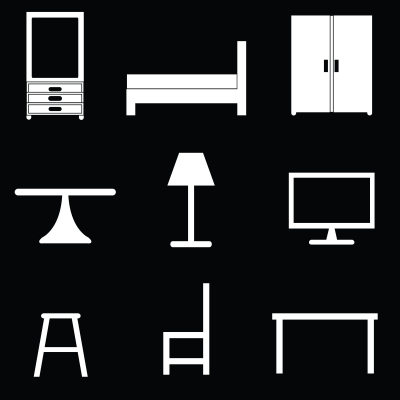Fixtures & Furniture – What Goes & What Stays in a Real Estate Sale?
Picture this. It’s almost moving day. It’s your first home. Your agent explains the purpose of this last visit is to simply make sure the home has been left reasonably clean and that it has been maintained as it was when you viewed it initially.
Photo courtesy of Kateen2528/freedigitalphotos.com
It’s been a lot of work to get to this point. There were offers, counter-offers, the loan process, escrow; a barely-understandable whirlwind experience at best. You are relieved it’s almost yours! When you open the door you are shocked that the sellers have removed light-fixtures, ceiling fans, one of the medicine cabinets, and even the stair rail! Trust me, it happens!
If It’s Attached, It Should Be Left By The Seller
When selling your home, things attached to the structure (other than personal items like paintings and photos) are considered fixtures. They always remain with the house unless specifically excluded in the listing and sales contract. Malibu lighting, yard lighting, outdoor speakers, installed water filtration, and anything integral to the functioning of the catchment system are also expected to stay.
If It’s Semi-Attached, Conveyance Should Be Specified
Spas, Jacuzzis, portable saunas, and furniture built to fit specific spaces should be individually addressed. It is critical to be very clear from the beginning what things are EXCLUDED.
Other Unattached Things Are Trickier & Should Be Addressed Separately
While appliances and window coverings are commonly included in a sale, buyers sometimes request that furniture, lawn equipment, and even an adjacent lot be included as part of the sale. Including such items can be tricky, especially if a loan is involved. Appliances are considered integral to the functioning of the home. Including them in a loan is not a problem.
Mortgage companies, will not, however, loan money for furniture.
Most home mortgage loans only allow a single parcel to be held as security for the mortgage. It is sometimes possible to include these extras, but doing so requires special care in drafting the contract. It’s really best to handle these things outside the sales contract if possible. Including them unnecessarily complicates an already complex transaction.
Final Walk-Through
Now let’s reconsider that contract I mentioned. That final look is also a time to ensure that the owner is moved out, any agreed repairs have been made, and the home is clean.
Here’s the rub, it’s still the seller’s home. They still live there and yet it’s not uncommon for me to receive offers requesting that sellers basically vacate the home a week in advance. It’s generally impossible to comply with such a request. After all, what if the sale falls through at the last minute? It happens.
Different agents handle this in different ways. Repairs, no problem, but vacating the home a week before closing is really unreasonable. Whether you are buying or selling, be sure to have the move-out conversation with your agent. Hawaii does not provide an opportunity to stay in the home after closing.
Ensuring a smooth transition is critical. Last minute surprises are never a good thing when it comes to the biggest transaction of your life! It’s a time when the “KISS” principal definitely rules. Just think how much worse the walk-thru situation above might have been if buyers above had also included furniture in the sale!
More Information
If you would like to know more about the process of buying or selling a home in Hawaii, please contact me.





Leave your opinion here. Please be nice. Your Email address will be kept private, this form is secure and we never spam you.